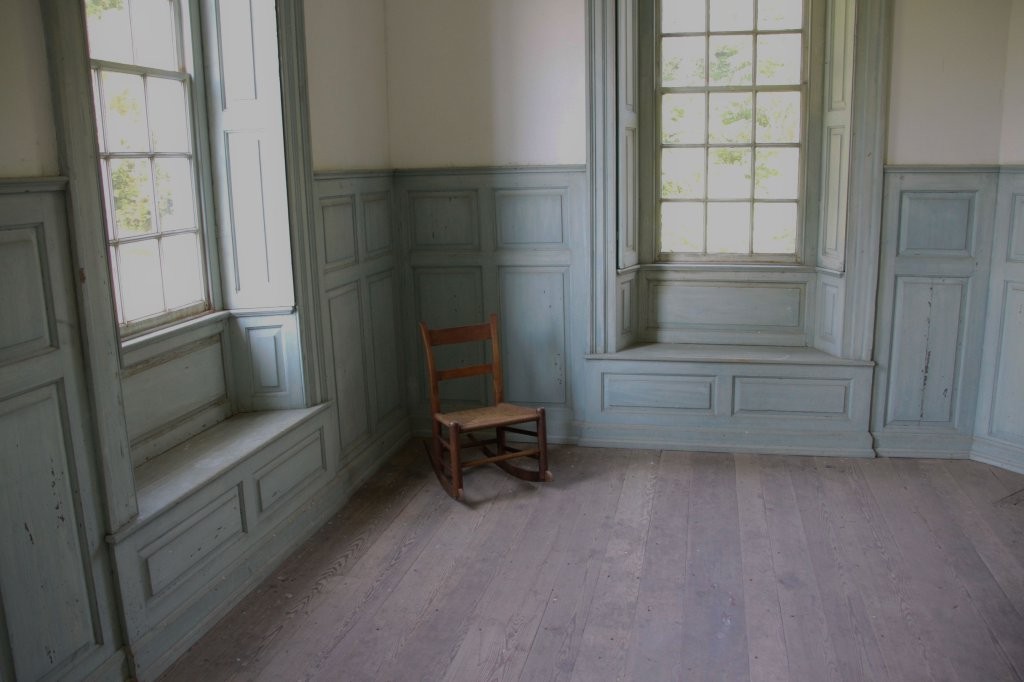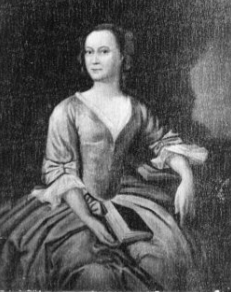Posted on August 15, 2017
Salubria Manor – Stevensburg, Virginia
Salubria Manor – Earthquake aggravates ghosts – house’s spiritual activity kicked into overdrive!

Image Source: Germanna Foundation
As the capital of Virginia during the colonial times, Williamsburg is a city frequently mentioned in American history books. Today, it joins Jamestown and Yorktown as a member of the Historic Triangle1, a popular tourist destination known especially for its various living history museums and scenic drives. To visitors, the city is a time capsule, a portal to when the United States was but thirteen colonies; to Virginians, a source of pride, a celebration of their state’s pivotal role in shaping the birth of the United States.
This may make it perfect for fear fans looking to complement evening ghost hunts with daytime activities, but not for ones who are want paranormal: uninterrupted. The great news? Virginia’s got every terror taste covered. Farther up north (and a good, long stretch away from bustling Williamsburg) lies the sleepy little community of Stevensburg, a town whose location on the margins of modernity warrant thrill seekers plenty of memorable frights.
Culpeper County
The story of Stevensburg cannot be told without mentioning the county it is part of. Culpeper County lies in a region whose earliest European inhabitants were German. The first of two waves of these immigrants arrived in 1714. Most were German miners and their families; they were enticed by Virginia Lieutenant Governor Alexander Spotswood to settle upon the land that the governor himself had previously purchased. Spotswood would later use his exceptional people skills when proposing The Treaty of Albany to the Iroquois Nations in 1721. The territory he planned and populated was aptly deemed the Germanna Colonies.
Orange County was formed from these settlements in 1734, but was later split into smaller entities, of which Culpeper County was one. It was established in 1749 and was named after Thomas Colpeper, the second Baron Culpeper of Thoresway.
Colpeper’s wealth and royal pedigree helped him become the governor of Virginia in 1677, but his unimpressive administration prompted him to be removed in 1683. Famous figures2 with more favorable ties to Culpeper include a young George Washington (the county’s first official surveyor), Red Cross founder Clara Barton, Hall of Fame baseball player Eppa Rixey, and legendary explorer Daniel Boone (a resident of Stevensburg in the 1750s.)

Image Source: Encyclopedia Virginia
Besides Boone’s old abode, two other Stevensburg sites afford a visit, though for very different reasons. Its post office, standing at about just ten feet by fifteen feet, is one of the smallest in the nation. Salubria Manor, a Georgian-style home which has Spotswood connections, is a hotbed for paranormal activity.
Abnormal Incidences
Perhaps Mother Nature can be thanked for really stirring the house’s spirits (a 2011 earthquake severely damaged the area3), but abnormal incidences have been reported even earlier. Below is but a snippet from ghost hunter Darrin Scott Wilson disquieting 2002 investigations4:
“The coin was placed here [at the east wall of Lady Spotswood’s bedroom] and audible remote microphone placed. Upon returning to this room, the coin was moved a full 3/16 – ½ inch. This was an amazing discovery, which visually disturbed one of the field investigators. Jim is analyzing the audio tape and I have video of the coin. Vibration is not an issue in this location. Mark captured what appears to be multi directional, intelligent, and structured orb movement in this exact location.”
And as the oldest brick house in Culpeper County, you can be sure that Salubria Manor has accumulated plenty of unsettled souls from its roster of deceased tenants.
Salubria Manor
Salubria Manor is a stately Georgian-style structure with romantic origins. At first resistant to Reverend John Thompson’s persistent attempts at courtship, the widow of Governor Alexander Spotswood, Butler Brayne Spotwood, finally succumbed to his efforts and accepted his hand in marriage in 1742. It is believed that Salubria Manor was constructed by Thompson to celebrate both his beloved and his achievement. Besides the two newlyweds, other noteworthy tenants of the house include the Hansbrough family and Doctor Carl T. Grayson, the personal physician of President Wilson.

Image Source: Geni.com
Salubria Manor – “Safe and Healthy”
When James Hansbrough purchased the property in 1802, he most definitely did not plan for his magnificent home to become a nexus of paranormal activity. In fact, the name that he gave it, salubria, ironically means “safe and healthy” in Latin.
To be sure, besides run-ins with ghosts, Salubria Manor has plenty else to offer. The Germanna Foundation received the Manor as a gift by Laura Grayson in 20005, so much of its original elements have been well preserved. Designed to mirror the structures of ancient Greece and the Italian Renaissance, mansions like Salubria were extremely popular among wealthy colonists during the 1800s. Pennsylvania Historical & Museum Commission writes6:
“The Georgian style, identified by its symmetrical composition and formal, classical details, was the most prevalent style in the English colonies throughout the 18th century. It was the first architect-inspired style in America, a distinct departure from the more utilitarian, earlier buildings that followed prevailing folk traditions.”
Fashioned from a system of smoke-colored bricks arranged neatly in Flemish bond, Salubria Manor certainly fits this definition well. Other structural elements were designed with proportion well in mind: a small, central door hugged by two decorative columns; two tall chimneys flanking the house’s sides; nine front windows set equally distanced apart; etc.

Image Source: Germanna Foundation
Encounters Between The Living And The Dead
Maybe that is why the dead are just so reluctant to leave. Ghostly apparitions of Lady Spotswood have been seen wandering the manor’s halls; the footsteps of her son Robert have been heard treading on the stairway. In fact, Marguerite du Pont Lee’s book, Virginia Ghosts, has a whole chapter devoted to capturing spooky tales from Salubria. On page 141, she tells of one chilling encounter, between the living and the dead:
“One night at supper the sugar bowl needed replenishing. Two of the Grayson boys were told to get the sugar from the barrel upstairs. Taking the lamp they journeyed up the steps. Crossing the dark hall guided by the dim light of the little lamp they carried, one boy leaned over the barrel while his brother John held the lamp.
As he arose from his stooping position to put the cover on the barrel, both boys saw very faintly a figure dressed in white with black hair falling over her shoulders, her arm outstretched, as she floated noiselessly down the hall! One look was sufficient! Uttering loud screams, head over heels they, lamp and sugar bowl tumbled down the stairs! The colored servant exclaimed, ‘Dose boys done seen de Spirit!’”7
Perhaps “de Spirit” the poor lads ran into was Mrs. Hansbrough, who was believed to have hung herself in one of the manor’s bedrooms. But with two cemeteries included on the property and Lady Spotswood’s grave still missing, we can’t be certain of which tortured female soul gave the Grayson boys such a fright.
Works Cited
- Sheridan, Alexander. “Overview of America’s Historic Triangle.” About Travel. About.com, 2015. Web. 24 July 2015.
- “Famous People.” Museum of Culpeper History. Museum of Culpeper History, 2001-2014. Web. 24 July 2015.
- Vala, Vincent. “Germanna Foundation recognized for preservation of Salubria.” The Culpeper Star Exponent. 27 September 2014. Web. 24 July 2015.
- Wilson, Darren Scott. “Darrin’s Salubria Report.” Virginia Ghosts. CPRI, Inc., 2011-2012. Web. 24 July 2015.
- “Salubria.” Germanna Foundation. Germanna Foundation, 2015. Web. 24 July 2015.
- “Common Building Types: Houses, schools, courthouses.” Pennsylvania Historical & Museum Commission. Commonwealth of Pennsylvania, 2015. Web. 24 July 2015.
- Lee, Margarite du Pont. Virginia Ghosts. Virginia: Virginia Book Company, 1966. Page 141.

